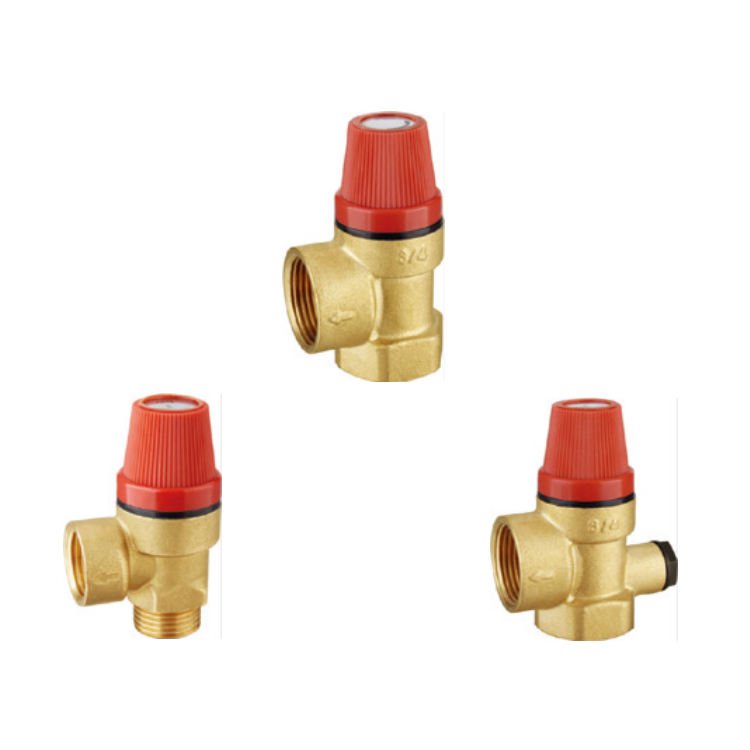Boiler pressure relief valves are critical for safe heating, but leaks and failures can disrupt your system, waste energy, and even cause costly damage. Ignoring these issues risks boiler breakdowns or dangerous pressure build-ups. Don’t worry—IVALVECRAFT offers reliable solutions to keep your system running smoothly. Read on to learn how to spot and fix common valve problems.
The most common problem with control valves, like a boiler pressure relief valve, is leaking, often due to excessive pressure, debris buildup, or worn-out seals. Faulty valves may fail to regulate pressure, leading to system inefficiencies or safety hazards. Regular maintenance and timely boiler relief valve replacement can prevent these issues.
Curious about why your valve is leaking or how to spot a bad one? Dive into our detailed guide to understand these issues and find practical solutions tailored for your needs.

Why Is My Boiler Pressure Relief Valve Leaking?
A leaking boiler pressure relief valve is a headache for any facility manager or procurement officer. This issue often pops up when the valve can’t handle the pressure in your boiler system. If the boiler pressure exceeds the valve’s set point, like a boiler relief valve 30 psi or boiler relief valve 50 psi, the valve opens to release excess pressure. But if it’s constantly leaking, something’s wrong. Common culprits include dirt or debris stuck in the valve seat, preventing a tight seal. Over time, corrosion or mineral buildup from water can also wear down the valve’s internal components, causing small but persistent leaks.
Another reason could be improper installation or sizing. If the boiler pressure relief valve discharge pipe isn’t correctly fitted, it can cause backpressure, forcing the valve to leak. Sometimes, the valve itself is just old and needs a boiler relief valve replacement. A valve that’s past its prime can’t hold pressure properly, leading to drips that waste water and energy. High system pressure from a malfunctioning boiler pressure reducing valve can also stress the relief valve, making leaks more likely.
To fix this, start by checking the boiler pressure valve settings. Ensure the pressure isn’t consistently above the valve’s rating. Clean the valve to remove debris, but if the problem persists, inspect the seals or consider replacing the valve. For businesses like plumbing wholesalers or construction projects, stocking high-quality valves from IVALVECRAFT ensures stable export pressure and sufficient flow rate, reducing leak risks. Regular maintenance schedules also help catch issues early, saving you from costly repairs or system downtime.
How to Tell If a Boiler Pressure Relief Valve Is Bad?
Spotting a bad boiler pressure relief valve before it causes major issues is key to keeping your heating system safe and efficient. One clear sign is constant leaking, even after cleaning or adjusting the pressure. If water keeps dripping from the boiler pressure relief valve discharge pipe, the valve’s internal components might be worn out or damaged. Another red flag is if the valve doesn’t open at all during high-pressure situations, which could lead to dangerous pressure build-ups in the boiler.
You might also notice inconsistent boiler performance. If the boiler pressure valve fails to regulate pressure properly, you could see fluctuating temperatures or hear strange noises like banging from the system. Check the boiler pressure relief valve location—usually near the top or side of the boiler—to see if there’s visible corrosion or damage. Rusty or cracked valves are often past saving and need immediate boiler relief valve replacement.
Testing the valve is a good way to confirm if it’s bad. Carefully lift the valve’s lever to see if it releases pressure and closes tightly afterward. If it sticks or doesn’t reseal, it’s likely faulty. For large-scale operations, like building materials wholesalers or DIY chain supermarkets, a bad valve can disrupt entire projects. Partnering with a reliable manufacturer like IVALVECRAFT ensures you get high-quality valves that meet strict standards, minimizing failures. Regular boiler pressure reducing valve troubleshooting, like checking for blockages or incorrect settings, can also help you catch problems early and keep your systems running smoothly.
Summary
Control valves, especially boiler pressure relief valves, are vital for safe and efficient heating systems, but leaks and failures are common issues that can’t be ignored. Leaking valves often stem from debris, wear, or incorrect pressure settings, while bad valves show signs like constant drips, corrosion, or failure to release pressure. Regular maintenance, proper installation, and timely boiler relief valve replacement can solve these problems, ensuring your system stays reliable. For purchasing officers, wholesalers, or construction projects, choosing high-quality valves is crucial.
Choose IVALVECRAFT, choose reliable partner, enjoy the high quality and best service.


